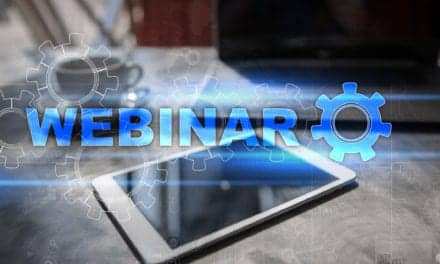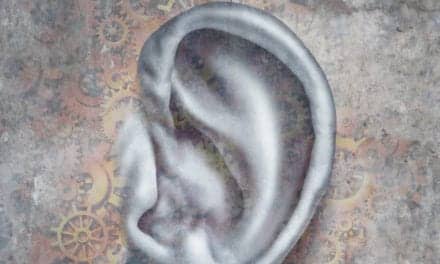Using a stethoscope can be a challenge for medical professionals who use hearing aids or cochlear implants. A comprehensive approach to stethoscope selection and use is presented, including consideration of type and degree of hearing loss, hearing aid style and programming, and suggestions for rehabilitation strategies. A wide range of stethoscopes and interface options—as well as their potential limitations—are discussed. Methods are proposed for selecting a stethoscope that is compatible with hearing aids or cochlear implants.
Successful stethoscope use is a critical skill for medical professionals. As increasing numbers of hearing-impaired individuals—bolstered by technological advances1 and disability legislation2—enter or continue health care careers,3-5 hearing health care providers will be asked to assist them.
Ideally, a stethoscope designed for hearing-impaired individuals should be easy to use (ie, preferably not require hearing instrument removal/adjustment) and the interface should be simple and quick to attach. It should be portable (pocket size) and accurately reproduce body sounds. In our experience, stethoscope specification sheets detailing amplification and frequency responses have not been particularly helpful in determining optimal stethoscope use. Instead, the three keys to success are:
- Fine-tuning of the hearing instrument,
- Choosing the “ best” stethoscope and appropriate interface,
- Learning/relearning to distinguish body sounds.
Often, the choice of hearing instrument and stethoscope/interface are interdependent, since not all stethoscope/interface options are available for every hearing instrument (Table 1). In fact, the type of hearing aid or cochlear implant (CI) chosen will determine the interface options available.
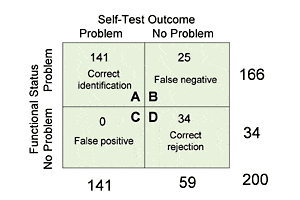
Table 1. Frequently, the choice of hearing instrument style and stethoscope/interface are interdependent, since not all stethoscope/interface options are available for every hearing instrument. This table provides a general look at the styles of hearing aids and the stethoscopes. Different interfaces vary in compatibility with different hearing aids; check with the manufacturer prior to recommending a specific product to a patient.
Fine-tuning the hearing instrument: Body sounds are generally low frequency, with heart clicks and murmurs from 20 Hz-150 Hz (some murmurs may be as high as 500 Hz) and lung sounds from 200 Hz– 600 Hz.6 Thus, hearing aids with good low frequency response (ie, programmed to emphasize low frequencies) seem to work best. A trial of different hearing aids may be necessary to achieve the desired result.
Since most hearing instruments today have multiple program options, a specific stethoscope program (one that emphasizes low frequency hearing) can be created and stored. Cochlear implants may be similarly programmed. Implant maps that eliminate room noise (100% of the microphone directed to the auxiliary connection), emphasize lower frequencies (and decrease higher frequencies so the lower frequencies will be perceived to the greatest extent) and lower the threshold for sound detection have been reported to yield better results.7 If it is not possible to significantly enhance low frequency hearing with a hearing instrument, a stethoscope that transposes low frequency sounds to higher frequencies where they can be heard may be helpful.8
Hearing health care professionals can contribute to successful outcomes by being aware of the interface options for each style of hearing aid and discussing these options with the patient. Keep in mind that interface options will depend on the hearing instrument (and stethoscope) selected, and this should be anticipated in accordance with the patient’s preference.
Stethoscopes considerations: Stethoscopes may be classified as acoustic or amplified electronic. Acoustic stethoscopes are traditional non-amplified stethoscopes. Amplified stethoscopes provide 20-50 dB of volume gain. This volume gain can introduce distortion and background noise, making interpretation of body sounds difficult. Some amplified stethoscopes have an audio output jack that can be attached to a recording device, a second listener or to headphones, audio cable or silhouette (Table 2). Special adapters may be required when connecting a cable to the output jack.9
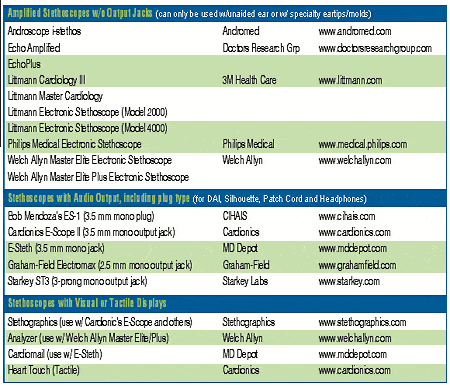
Table 2. Popular stethoscope models, their manufacturers, and contact information. The stethoscopes are placed into three general groups: 1) Amplified stethoscopes that can only be used with unaided ears or with speciality eartips or earmolds; 2) Stethoscopes that feature audio input (eg, DAI, silhouette, patch cord, or headphones); and 3) Stethoscopes that use visual or tactile displays.
Stethoscope tubing may also be modified. Monaural tubing10 allows use of a hearing instrument in the contralateral ear. There are also non-auditory (visual and tactile) stethoscopes. For example, the E-SCOPE II by Cardionics connects to a laptop or PDA with Stethographics software and displays visual representations of heart and lung sounds. A tactile stethoscope has recently been marketed (Table 2).11
Hearing Aid + Stethoscope Use
In the process of choosing a stethoscope, the importance of the interface is often overlooked. Hearing instrument style will determine the interface options available (Table 1).
CICs: CICs are often recommended for people who use stethoscopes. However, it may be uncomfortable to place the stethoscope ear tip directly in the ear and against the aid. A common solution for CIC users is to remove their aids and use an amplified stethoscope or alternatively to keep their aids in and use headphones.
ITEs: In our experience, ITE hearing aid users often have difficulty in finding a workable interface. At this time, headphones and specialty ear tips offer the only interfaces, and feedback can be an issue. If feedback cannot be controlled, the only option is to remove the hearing aids and use an amplified stethoscope.
BTEs: Generally, BTE hearing aid users have a greater degree of hearing loss. If this involves the low frequencies, the amplification of a stethoscope alone will be insufficient. BTE hearing aid users have several options. Specialty earmolds are sometimes helpful, but the issue of feedback is greater for patients with more severe losses. Telecoil use is an option (with a silhouette interface), and a stethoscope should be chosen that accepts a silhouette cable (see Table 1). Direct audio input is another option. The audio shoe is ordered by the dispensing professional, and the DAI cord may come with the stethoscope or may need to be special ordered.9 However, there can be compatibility issues with DAI (discussed below).
Bone conduction aids: On several occasions, bone conduction hearing aid users have successfully interfaced to an amplified stethoscope through an FM receiver and TMX neckloop,10 or by disconnecting the BTE cord and connecting a specially made cord from the stethoscope to the vibrator.
Cochlear implants: Depending on processor option and style, DAI or telecoil technology may be accessed. Body worn speech processors use a cable (patch cord) connected directly to the stethoscope. Ear-level processors can use a silhouette (for telecoil), DAI, or headphones placed over the implant microphone. Special attenuated patch cords may be needed to ensure proper functioning.9
Interface Considerations
Eartips/Earmolds: Several labs (Table 2) offer specialty earmolds for ITC, CIC, and BTE hearing aid users. Some BTE users have inserted the stethoscope earpiece (with ear tip removed) into an earmold vent. The user can then hear sounds from an amplified stethoscope directly into the ear without removing the aid.11 Feedback may occur with this set up, especially for those with severe loss. Specialty ear tips that replace existing stethoscope ear tips are also available from earmold labs and may be more comfortable for ITC, CIC, and ITE users. The ear tips, however, have historically suffered from a low success rate, as it is often difficult to line up the stethoscope eartips with the hearing aid microphone; the resultant pressure on the ear may be uncomfortable.
Headphones: Headphones are a viable option for CIC, and ITE hearing aid users and perhaps ear-level processor cochlear implants. The headphones chosen should have good low frequency response. Cardionics (Table 2) offers a stethoscope with headphones. If feedback occurs with headphones, the volume can be decreased on the hearing aid and increased on the stethoscope to compensate.
Direct Audio Input (DAI): Direct Audio Input can connect the stethoscope output to a BTE aid via audio input shoes on the hearing aid and a DAI cable. Hearing aids with good low frequency response (a call to a manufacturer’s engineer should give you the style) seem to work best.
Programmable hearing aids also offer the ability to improve the low frequency response when using DAI. At this time, there have been a few aids that have had better success than others, but it is largely a trial-and-error process. The DAI cord may need to be attenuated in order to function with the hearing aid. Since some hearing aids use DAI in telecoil mode, it is necessary to make sure the hearing aid microphone turns off when DAI is used so that background noise does not interfere with stethoscope use.
Telecoil: A silhouette for hearing aids with telecoils is available for BTE users and some ITE users. Programming to increase the low frequency response of the telecoil may need to be made. Interference to the telecoil from electrical sources like surgery machines, computers, fluorescent lights, and electrical panels can render the telecoil option ineffective. The hearing aid wearer can simply turn their aid to telecoil in their usual work environments to test if interference exists.
Other Interfaces: FM system use with a stethoscope1 has been accomplished on a few occasions. An auxiliary cable from the stethoscope to the FM transmitter will transmit the signal to the FM receiver and listening interface option. A special-order amplifier is also available to power a neckloop.
Cochlear implant users can use a cable (patch cord) from the stethoscope to the CI speech processor (available for both body-worn and ear-level processors). The patch cord may need attenuation in order to avoid overload of the CI speech processor. The output characteristics of the patch cord must be matched to the input jack of the CI speech processor (ie, 2.5 mm vs 3.5 mm, mono vs. stereo). If necessary, an adapter can be added.9
Learning/Relearning to Identify Body Sounds
Having optimal, compatible equipment is important, but these alone will not guarantee successful stethoscope use. Learning/relearning to identify body sounds is a necessary, albeit sometimes slow, process. Many resources are available for the motivated person.12
We suggest practicing with Internet based websites of body sounds. The first goal should be to distinguish various heart murmurs and lung sounds using the hearing instrument with the computer speaker. Visual display stethoscopes can also be used with computer generated programs.13 Once competency is achieved, the interface and stethoscope can be added. This will allow troubleshooting to see if there is a problem with the stethoscope itself or with the interface. It is helpful to then use teaching mannequins which allow modulation of the speed and volume of the body sounds. Finally, lots of practice will build confidence and ensure optimal performance.
Once the user is confident with recognition of body sounds, the hearing instrument can be reprogrammed to optimal settings. Use of complimentary clinical information, such as cardiac ultrasounds, chest Xrays, and the skill of a mentor (especially useful with visual display and/or tactile stethoscopes) are also of great benefit. Modified physical exam skills, which emphasize palpation for example, may augment stethoscope findings.
Consider All the Options: Hearing Aid, Interface, and Stethoscope
When evaluating a hearing-impaired medical professional for optimal stethoscope use, it is most important to consider type and degree of hearing loss and aim to maximize lower frequency hearing with the hearing instrument. Choosing a particular hearing instrument will limit the interface option and stethoscope options. Thus, it is important to anticipate professional requirements and personal preferences.
Trial periods using different stethoscopes can be very helpful and are available from many manufacturers. The selection of available stethoscopes changes based on market demand, so manufacturers should be contacted directly (Table 2) about product availability and servicing. With perseverance (and perhaps some creativity), virtually all hearing-impaired medical professionals can achieve competence in the critical skill of stethoscope use.


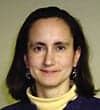
|
References
1. Fabry DA. Clinical and Communication Access Through Amplification for a Medical Student with Severe Hearing Loss: Case Report. J Amer Acad Audiol. 1993;4:426-431.
2. Steinberg R et al. Reasonable Accommodations for Medical Faculty with Disabilities. JAMA. 2002; 288(24):3147-3154.
3. Zazove P. Considerations for Students with Hearing Loss Entering the Health Profession. J Assn Med Prof Hear Loss (JAMPHL) [serial publication]. Available at: www.amphl.org/jamphl/fall2002/zazove.html; 2002.
4. Tynan A. At the Portal of the Profession – The Veterinary Profession and People with Disabilities: A North American Perspective. The Royal Veterinary College. A UK research project by the Higher Education Funding Council for England. Available at: www.rvc.ac.uk; 2002.
5. Tynan A. Riders in the Storm: Medical Professionals with Hearing Loss as Leaders in the Professional Field. J Assn Med Prof Hear Loss (JAMPHL) [serial publication]. Available at: www.jamphl/summer 2003/tynan.html;2003.
6. Abrams J. Essentials of Cardiac Physical Diagnosis. Philadelphia: Lea & Febiger. 1987.
7. Barrere CC. Stethoscopes and Medical Professionals with Hearing Losses. Presented at: 2nd annual meeting of the Assn of Medical Professionals with Hearing Loss; Miamisburg, OH; July, 2002.
8. Dolan TG. Stethoscopes: Real-ear measurements and digital frequency transposition. Hear Jour. 2002;54 (1):36-44.
9. Mendoza R. Cochlear Implant and Hearing Aid Interface Systems [Web site]. Available at: www.cihais.com. Accessed January 22, 2004.
10. Osborn A. Reflections on Treacher Collins Syndrome [Web site article]. Available at: www.treachercollins.org/main.html. Accessed: January 22, 2004.
11. Applebaum S. Stethoscope Use without Behind-the-Ear Hearing Aid Removal. J Assn Med Prof Hear Loss (JAMPHL) [serial publication]. Available at: www.amphl.org/jamphl/applebaum.html; 2003.
12. Assn of Medical Professionals with Hearing Loss Web site. Available at: www.amphl.org. Accessed: January 22, 2004.
13. Barrere CC. Books and CDs for Learning to Interpret stethographics Waveforms. J Assn Med Prof Hear Loss (JAMPHL) [serial publication]. Available at: www.amphl.org/2003/barrerebookreview.html; Accessed: January 22, 2004.
Correspondence can be addressed to HR or Rebecca Morris, Effective Communication Solutions Inc, 1030 Clubhouse Dr., Independence, KY 41051; email: [email protected].


